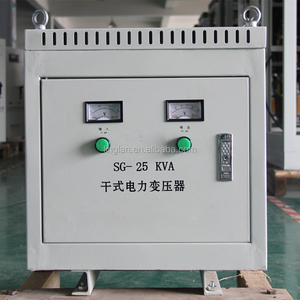Introduction to Phase Transformer Voltage
A phase transformer voltage is a pivotal component in electrical engineering, primarily used to alter voltage levels in power systems. These transformers play a crucial role in ensuring efficient electricity distribution for various applications, ranging from industrial systems to commercial buildings. Their capacity to manage phase differences helps rectify voltage supply issues, enhancing performance and reliability.
Types of Phase Transformer Voltage
Phase transformer voltages come in several types, each designed for specific applications and functionalities:
- Delta-Delta Transformers: Typically used for heavy loads, these transformers are effective in transmitting three-phase power without phase shift.
- Wye-Wye Transformers: Often utilized in cases where system grounding and neutral points are crucial, providing stability and safety.
- Delta-Wye Transformers: Commonly employed for voltage step-down applications, they enable easier synchronization between generators and the grid.
- Phase-Shifting Transformers: Specially designed to alter phase angles, these transformers are essential in managing power flow and enhancing voltage stability.
Function and Features of Phase Transformer Voltage
The primary function of phase transformer voltage is to regulate and modify voltage in electrical systems. Key features include:
- Voltage Regulation: Maintains consistent voltage levels across different loads, preventing fluctuations that could damage electrical equipment.
- Phase Shift Capability: Allows for adjustment in phase angles, optimizing power distribution and reducing losses.
- High Efficiency: Offers high performance with minimal energy loss during voltage conversion.
- Durability: Constructed with high-quality materials, these transformers are designed to withstand harsh operating conditions.
- Versatility: Suitable for various industrial applications, including renewable energy systems, grid integration, and heavy machinery.
Applications of Phase Transformer Voltage
Phase transformer voltages find extensive usage across multiple sectors due to their adaptability and reliability:
- Industrial Manufacturing: Essential for powering heavy machinery and equipment requiring specific voltage levels.
- Renewable Energy: Plays a critical role in wind and solar energy systems for connecting to the grid while ensuring voltage stability.
- Commercial Buildings: Used in HVAC systems and large electrical circuits to ensure optimal energy consumption.
- Telecommunications: Provides reliable power supply for communication networks, safeguarding against outages and fluctuations.
- Transportation: Integral in electric rail systems and charging stations, maintaining the necessary voltage for operational efficiency.
Advantages of Utilizing Phase Transformer Voltage
The adoption of phase transformer voltage offers numerous advantages, making them essential in modern power systems:
- Enhanced Stability: Ensures a stable power supply, reducing the risk of interruptions that can lead to costly downtime.
- Improved Efficiency: Reduces energy losses, contributing to lower operational costs and a smaller carbon footprint.
- Customizable Solutions: Can be tailored to meet specific engineering requirements, accommodating a range of voltage and phase configurations.
- Maintains Equipment Longevity: By providing consistent voltage levels, transformers protect sensitive electrical components from damage.
- Facilitates Load Balancing: Distributes electrical loads evenly, thus optimizing the performance and lifespan of electrical systems.


















































































































































































































